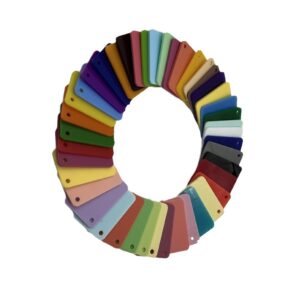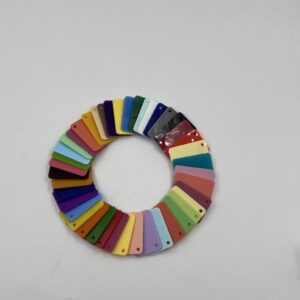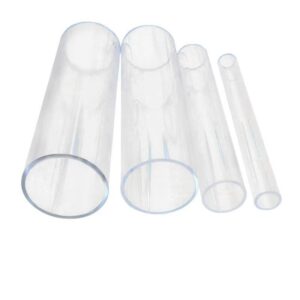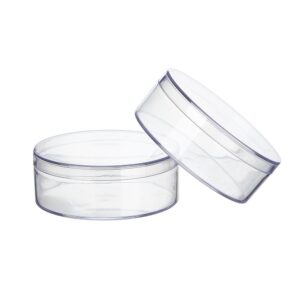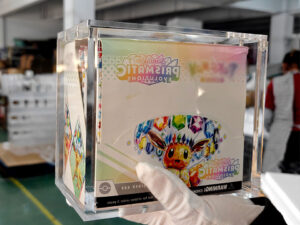Summary
The acrylic industry, centered around polymethyl methacrylate (PMMA), is a vital sector within modern manufacturing due to its unique properties and wide-ranging applications. Acrylic is valued for its clarity, durability, and lightweight characteristics, making it an essential material in industries such as automotive, construction, healthcare, and packaging. Its versatility allows for various forms, including sheets and films, which are used in everything from signage to medical devices. The growing demand for acrylic products underscores its importance in meeting the needs of contemporary markets.
Table of Contents
Notably, the acrylic market is projected to experience substantial growth, with estimates suggesting a value exceeding USD 120 billion by 2030, fueled by sectors like construction, automotive, and healthcare. Innovations in manufacturing processes and advancements in technology, such as machine learning, are enhancing production efficiency and product customization, further driving market expansion. However, the industry faces challenges related to sustainability, as acrylic is derived from non-renewable resources and its production emits harmful pollutants. The rising consumer demand for eco-friendly alternatives has prompted manufacturers to explore sustainable practices and materials.
The acrylic industry is also experiencing regional growth dynamics, with North America leading in market share due to strong demand in construction and automotive sectors. Emerging markets in Asia, the Middle East, and Latin America are increasingly significant as urbanization and rising disposable incomes contribute to the demand for acrylic products. However, supply chain disruptions and stricter environmental regulations pose challenges that could affect the industry’s trajectory.
In summary, while the acrylic industry’s growth signifies economic potential and innovation, it simultaneously raises critical environmental considerations. As the sector adapts to changing consumer preferences and regulatory landscapes, balancing profitability with sustainability will be essential for its long-term viability.
Overview of the Acrylic Industry
Acrylic, also known as polymethyl methacrylate (PMMA), is a synthetic polymer that has gained immense popularity across various industries due to its unique properties and versatility. Its applications range from paints and textiles to automotive and medical devices, making it an integral material in modern manufacturing processes.
Properties and Manufacturing Process
The durability, clarity, and lightweight nature of acrylic make it a favored choice for numerous applications. Acrylic can be produced in various forms, including translucent, opaque, and colored sheets, allowing for a broad spectrum of uses. The manufacturing process typically involves polymerization, where acrylic acid is combined with other chemicals to create a liquid resin. This resin is then molded and heated to form solid acrylic products. Innovations in production methods are also underway, incorporating smarter and more automated technologies to enhance efficiency and reduce waste in the manufacturing process.
Market Segmentation and Applications
The acrylic market is segmented into several key application areas, including signage, display fixtures, automotive components, construction materials, and medical devices. In the signage sector alone, acrylic is anticipated to hold a significant market share due to its design flexibility and ability to diffuse light effectively, making it ideal for both indoor and outdoor displays. The packaging segment is among the fastest-growing areas, driven by increasing demand from food manufacturers and retail sectors, which seek sustainable and innovative packaging solutions.
Industry Growth and Sustainability Challenges
The growth of the acrylic industry is propelled by rising demand across diverse end-user sectors, including construction, healthcare, and consumer goods. However, sustainability remains a crucial consideration. Acrylic is derived from petroleum, a non-renewable resource, and its production processes emit volatile organic compounds (VOCs) and greenhouse gases, raising environmental concerns. While acrylic products can be recyclable, the necessity for specialized facilities often results in many items ending up in landfills. As consumer awareness about sustainability increases, the industry is urged to adopt more eco-friendly practices and explore alternatives that minimize environmental impacts.

Market Dynamics
The acrylic industry is experiencing significant growth driven by various market dynamics that influence demand and supply across multiple sectors. Key drivers for this growth include increasing demand from end-use industries such as automotive, construction, packaging, and textiles. The versatility and lightweight nature of acrylic materials make them ideal for a wide range of applications, contributing to their rising popularity.
Key Growth Drivers
Demand from End-Use Industries
The automotive sector, in particular, is a major contributor to acrylic market expansion, as manufacturers seek durable and lightweight materials to enhance vehicle performance and fuel efficiency. Similarly, the construction industry benefits from acrylic’s aesthetic appeal and durability, making it a preferred choice for building materials.
Consumer Expectations
Market dynamics are increasingly influenced by customer expectations for high durability, aesthetic appeal, and compliance with environmental standards. This has set the stage for continued growth and diversification within the acrylic sector, as companies adapt to meet these changing preferences.
Technological Advancements
Advancements in technology, such as machine learning and artificial intelligence, are transforming the acrylic industry by enhancing production efficiency and product quality. Innovations like low-water dyeing and digital printing techniques are not only improving sustainability but also allowing for greater customization of acrylic products, appealing to modern consumers’ preferences for tailored solutions.
Market Trends and Opportunities
Sustainability Focus
A growing emphasis on sustainability and eco-friendly practices is driving demand for recycled and bio-based acrylic products. This shift is supported by increased consumer awareness regarding environmental impacts and health safety, leading to a preference for non-toxic materials. Companies that prioritize sustainable manufacturing practices and invest in innovative materials are likely to gain a competitive advantage in the market.
Regional Insights
Geographical dynamics also play a crucial role in shaping the acrylic market, with North America projected to hold the largest market share due to robust demand in the automotive and construction sectors. Emerging markets in Asia, the Middle East, and Latin America are also becoming increasingly significant as urbanization and rising disposable incomes fuel demand for modern synthetic fibers.
Challenges and Constraints
While the market is poised for growth, it is not without challenges. Supply chain disruptions, driven by global economic uncertainties and logistical issues, may impact the availability of acrylic materials. Additionally, regulatory frameworks regarding environmental compliance are becoming stricter, requiring manufacturers to adapt swiftly to maintain market relevance and avoid potential penalties.

Regional Analysis
North America
North America holds a dominant position in the acrylic acid market, with the largest market share of 37% as of 2024. The region’s robust construction industry, significant utilization of acrylic polymers in paints, coatings, and adhesives, as well as a growing automotive sector, contribute to this leadership. Furthermore, the increasing emphasis on sustainability drives demand for eco-friendly materials, including biobased acrylic acid, reinforcing North America’s market dominance. This region is characterized by advanced research and development activities, which further bolster its competitive edge in the global acrylic polymer market.
Europe
Europe is witnessing a steady increase in demand for acrylic acid, particularly driven by the automotive and chemical sectors. The strict environmental regulations prevalent in Europe have prompted a shift towards bio-based and water-based acrylic acid products, which are rapidly gaining popularity over traditional solvent-based alternatives. Additionally, technological advancements and improvements in production processes are enhancing product performance while reducing carbon footprints, positioning Europe as a key player in the global acrylic acid market.
Asia-Pacific
In the Asia-Pacific region, innovation and expansion are crucial for the growth of the acrylic acid market. Companies are developing advanced manufacturing equipment that adheres to strict environmental regulations while meeting the growing demand for efficient and durable products. The urbanization and infrastructure development in this region create substantial opportunities for market growth. By establishing local production facilities and supply chains, companies can enhance their market presence and improve customer service, thereby fostering long-term customer loyalty.
Latin America
The Latin American acrylic acid market is anticipated to grow significantly, with projections indicating a potential market value of USD 372.6 million by 2033. This growth is attributed to the rising demand for acrylic acid-based products across various applications, including paints and adhesives. As industries in Latin America continue to expand, the acrylic market is expected to benefit from increased investment and technological advancements in production processes.
Middle East and Africa
The Middle East and Africa acrylic market is also poised for growth, with a current valuation of USD 235.4 million in 2023 and expected to expand at a CAGR of 4.7% through 2033. Factors such as rising urbanization, industrial development, and a focus on sustainable materials are driving market dynamics in this region. By adapting to local market needs and regulations, companies can effectively capture emerging opportunities in the Middle East and Africa.

Future Outlook
The acrylic industry is poised for significant growth in the coming years, driven by innovation, economic confidence, and increasing demand for sustainable manufacturing practices. According to recent analyses, the sustainable manufacturing market was valued at USD 215.4 billion in 2024, with projections indicating it could reach USD 367.2 billion by 2029, reflecting a compound annual growth rate (CAGR) of 11.3% during this period. This trend suggests a broader movement within the manufacturing sector, including the acrylic industry, toward integrating environmentally-friendly practices and reducing carbon footprints.
Key industry insights indicate that the global acrylonitrile market, a critical component in the production of acrylic fibers and plastics, is expected to grow at a CAGR of 4.0% from 2025 to 2030, reaching approximately USD 15,005.5 million by the end of the forecast period. This growth can be attributed to several factors, including the emergence of new technologies and a shift toward circular economic strategies, whereby manufacturers increasingly design products for reuse and recyclability.
Moreover, the acrylic acid market is anticipated to benefit from industry consolidations and rapid innovation, which could further enhance market potential and establish a favorable business environment in the region. In conjunction with these developments, the integration of renewable energy sources and energy-saving machinery is expected to gain traction, aligning with global trends towards sustainability and efficiency.

Economic and Environmental Implications
The acrylic industry has seen significant growth, influenced by a combination of economic and environmental factors. One of the key drivers is the increasing consumer awareness regarding environmental issues and health safety, leading to a demand for non-toxic and eco-friendly products. This shift in consumer preferences is not just a passing trend; it reflects a broader change in market dynamics where sustainability plays a crucial role in shaping industry standards and practices.
Market Growth and Economic Impact
The acrylic acid market is projected to experience substantial growth, with estimates suggesting that it could exceed USD 120 billion by 2030, exhibiting a compound annual growth rate (CAGR) of more than 5.8% from 2023 to 2030. Key sectors driving this growth include construction, automotive, healthcare, and signage industries, which are increasingly reliant on acrylic materials for their operations. Additionally, the employment landscape in plastics manufacturing has shown resilience, growing at a rate of 1.1% per year from 2013 to 2023, indicating a robust demand for acrylic-related jobs.
The economic implications are significant, as this growth not only stimulates job creation but also prompts industry consolidation among manufacturers, enhancing operational efficiencies and innovation in product development. Governments in countries like China, Japan, and India are encouraging export-oriented manufacturing, further supporting this economic expansion.
Environmental Considerations
While the economic growth of the acrylic industry is promising, it is accompanied by pressing environmental concerns. The manufacturing sector is responsible for a substantial portion of global carbon emissions, with conventional practices contributing to roughly one-fifth of these emissions. The move towards a circular economy presents both challenges and opportunities, as industries grapple with the need to reduce waste and improve sustainability practices.
Acrylic paints, for example, pose significant risks to aquatic ecosystems through microplastic pollution, particularly when leftover paint enters water systems. The toxic components of acrylic paints can also harm marine life, necessitating urgent action to mitigate their environmental impact. Manufacturers are increasingly called to adopt sustainable practices, such as utilizing renewable energy sources and improving operational transparency, to reduce their overall carbon footprint and contribute to ecological conservation efforts.





